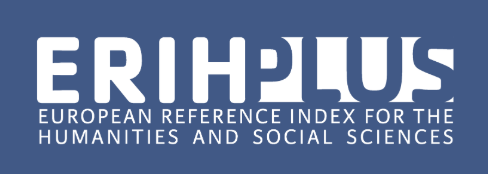Issue X/2 | Pages: 83 | ISSN 1338-6743
Registration Number: EV 5817/19
LANGUAGE, CULTURE, COMMUNICATION
VLADIMÍR BILOVESKÝ, MARTA KOVÁČOVÁ – RECEPTION OF RUSSIAN SOVIET LITERATURE IN SLOVAKIA AFTER 1989
Abstract: The study focuses on the reception of Russian Soviet literature in Slovakia after 1989 on the basis of three phenomena: literature that could not be published on political or ideological reasons before 1989, contemporary Russian literature, reissues, or new translations of Russian classical literature. The study specifies individual phenomena, the socio-political situation after 1989, authors, translators, the translation process and the publishing houses.
Keywords: translation, Russian Soviet literature, period after 1989, writers, translators, publishing policy.
pp. 9 – 17
EDITA JURČÁKOVÁ, JANA ŠTEFAŇÁKOVÁ – SNP SQUARE IN BANSKA BYSTRICA AS AN OBJECT OF THE STUDY OF LINGUISTIC LANDSCAPE
Abstract: The present study is a pilot survey of the linguistic landscape of the SNP Square in Banská Bystrica, which is focused on a basic description of the defined urban space. The aim is to point out the development of the linguistic landscape in the historical context and to map its current space with an emphasis on the localization and representation of local businesses. Attention is also paid to the use of languages in the linguistic landscape and to the analysis of the types of signs that constitute the linguistic landscape of the square.
Keywords: linguistic landscape, sign, bottom-up signs, top-down signs, nomenclature, history, town square.
pp. 18 – 32
PATRÍCIA MOLNÁROVÁ – THE CONTRAST AND ITS FUNCTION IN THE EXPRESSIVE AND IDEOLOGICALLY DENOMINATED POLITICAL ENTITY
Abstract: The denomination of a political subject in the ideologically conditioned media discourse of the period of socialism reflects important socio- and pragma stylistic aspects of language resulting from the socio-political context. Research attention is focused on expressive lexicon in the denomination of a political entity occurring in a contrasting position due to the bipolarity of the world – we and the others, allies and enemies, socialism and capitalism, East and West. The aim of the paper is to analyse motivational categories and contextual expressiveness to point out the usage and function of contrast in the ideologically determi
Keywords: contextual expressiveness, contrast, ideology, official party discourse, propaganda, socialism, stereotype, stylistics.
pp. 33 – 42
EVA MOLNÁROVÁ, JANA LAUKOVÁ – POSSIBILITIES FOR RESEARCH ON THE LINGUISTIC LANDSCAPE ON THE EXAMPLE OF THE TOWN BANSKA BYSTRICA
Abstract: The main aim of this study is to present an international research project entitled APVV 18-0115 Language in the City – Documenting the Multimodal Semiosphere of Linguistic Landscapes in Slovakia and in a Comparative Perspective. The study focuses on the characteristics, specifics and results of quantitative and qualitative analysis of signs in a selected locality of Banska Bystrica (Namestie Stefana Moyzesa and Horna Street in the city centre) in the context of multilingualism and multimodality.
Keywords: linguistic landscape, multimodality, multilingualism, signs, top-down and bottom-up signs, linguistic analysis.
pp. 43 – 51
MARTINA ULIČNÁ – RUSSIAN AND SLOVAK COLOUR NAMES FOR WHITE AND BLACK AND THEIR RELATIONS
Abstract: Russian colour names белый and чёрный, in Slovak biely and čierny name the oldest color contrast that exists in the language: the presence or absence of light, light or dark coloration of the inanimate object and the human body, but in addition to color express other semantic signs associated with color symbolically or through various associations, which are often obscured. There are differences between the Russian and Slovak languages in the range of semantic features expressed by the mentioned lexemes, as well as in the use of these colour names in multiword names and phraseology. The aim of the paper is not only to give a basic overview of frequent multi-word names and phraseology with the two colour names, but also to outline the contrasts that these multi-word names of phraseological and non-phraseological nature create in Russian and Slovak, as well as the asymmetries that exist between the compared colour names in both languages.
Keywords: colour names white and black, idioms, phraseology, comparison, Russian-Slovak equivalents, complete and partial equivalence in meaning.
pp. 52 – 65
DIDACTICS AND METHODOLOGY OF TEACHING AND FOREIGN LANGUAGES
Abstract: The article discusses the use of captions in YouTube videos during an online listening comprehension course. The aim of the study was to review how captions were perceived by 29 students of English in the translation studies programme. A questionnaire survey was used to collect data. We provide an overview of situations in which students opt for using captions and indicates areas in which they perceive improvement thanks to captions. Students tend to use captions when they encounter comprehension difficulties similar to those in real communication situations, including unknown expressions, unfamiliar accents or dialects, or pace of speech too fast to follow. Using captions when watching videos can be beneficial as they help build new vocabulary, facilitating creation of associations between the spoken and written forms of the words. Keywords: YouTube video, captions, language learning, listening comprehension. pp. 66 – 73 Abstract: The paper deals with the current problem of grammatical interference in the process of teaching the Russian language in linguistics. Through theoretical background, we demonstrate the negative, but also positive, effects of the mother tongue on the acquisition of a second foreign language; we list the most commonly used types of grammar teaching methodology. In the analytical-interpretative part, we build on our own pedagogical experience and present the most common mistakes of Russian studies students in mastering Russian grammar, together with suggestions for the elimination of these problems. Keywords: Russian language, teaching methods, grammar, grammatical interference. pp. 74 – 81JANA BOLTIŽIAR – PERCEPTION OF CAPTIONS IN YOUTUBE VIDEOS DURING AN ONLINE LISTENING COMPREHENSION COURSE
KATARÍNA JALOVÁ – THE GRAMMATICAL INTERFERENCE PROBLEM AMONG SLOVAK STUDENTS OF RUSSIAN STUDIES
REVIEWS
